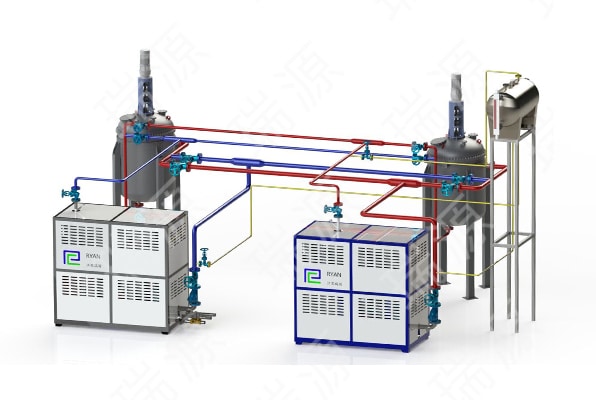Heat transfer oil electric heaters https://8ruiyan.com/en/all-organic-heat-carrier-boilers/are efficient, energy-saving, and eco-friendly. They serve industries like chemicals, metallurgy, food, rubber, and plastics. Their operational environment critically impacts safety, performance, and longevity. Unlike traditional heaters, these units have specific environmental needs. Understanding these requirements ensures proper selection, installation, and maintenance.

I. Ambient Temperature
Ambient temperature significantly affects performance. External temperatures must stay within design limits.
High-Temperature Environments:
- Keep ambient temperature below the heater’s maximum operating temperature.
- Temperatures exceeding 40°C risk overheating. This reduces lifespan and creates hazards.
- Ensure adequate ventilation for heat dissipation.
- Regularly inspect temperature sensors.
Low-Temperature Environments:
- Prevent oil freezing or excessive viscosity. Cold impairs oil flow and heat transfer.
- Maintain oil temperature above its pour point.
- Install antifreeze devices in cold climates/seasons.
- Preheat systems before startup to protect pumps.
II. Humidity Control
Avoid high-humidity environments.
Key Concerns:
- Humidity corrodes equipment casings.
- Moisture causes electrical faults like short circuits.
Protection Measures:
- Use waterproof electrical components (e.g., enclosures, terminals).
- Avoid steam rooms or damp basements.
- Select corrosion-resistant casing materials.
- Regularly check electrical seals for integrity.
III. Ventilation & Heat Dissipation
Proper airflow prevents overheating hazards.
Requirements:
- Install heaters in well-ventilated areas.
- Maintain open space around units to avoid heat buildup.
- High-power heaters may need auxiliary cooling (fans/radiators).
- Ensure unobstructed hot air exhaust.
IV. Power Supply Specifications
Stable electricity is essential.
Critical Factors:
- Voltage fluctuations must stay within ±10%.
- Ground all equipment properly for safety.
- Install protective devices:
- Overload protection
- Leakage (ground-fault) protection
- Temperature limit controls
V. Installation Space
Follow spatial guidelines for safety and maintenance.
Requirements:
- Mount on stable, vibration-resistant platforms.
- Prohibit installation in flammable/explosive areas.
- Maintain ≥30 cm clearance on all sides.
- Use explosion-proof/corrosion-resistant models in harsh environments.
VI. Special Environments
- In explosive zones: Use certified explosion-proof heaters.
- With corrosive gases: Specify corrosion-resistant units.
Заключение
Heat transfer oil electric heaters require controlled environments. Temperature, humidity, ventilation, power stability, and space directly impact safety and efficiency. Prioritize these factors during selection and installation for reliable long-term operation.
For further consultation, please contact our technical team for expert advice.
Whatsapp:86-19106101570
wechat:86-19106101570
email:nieyili@cnryan.com
